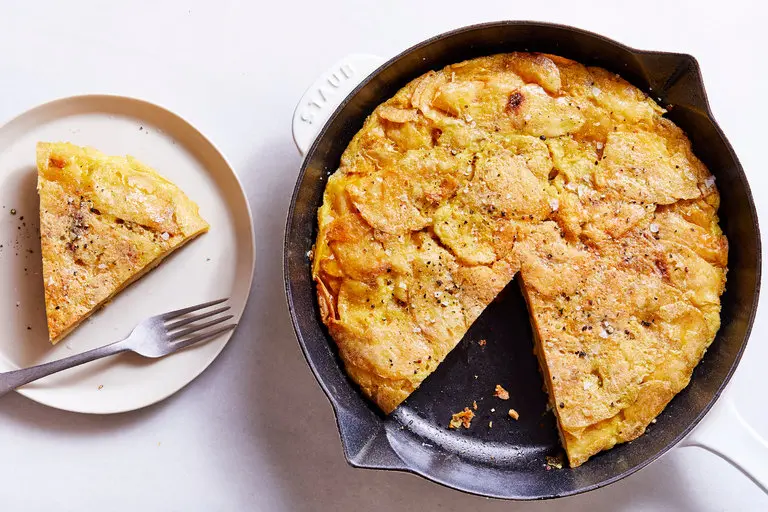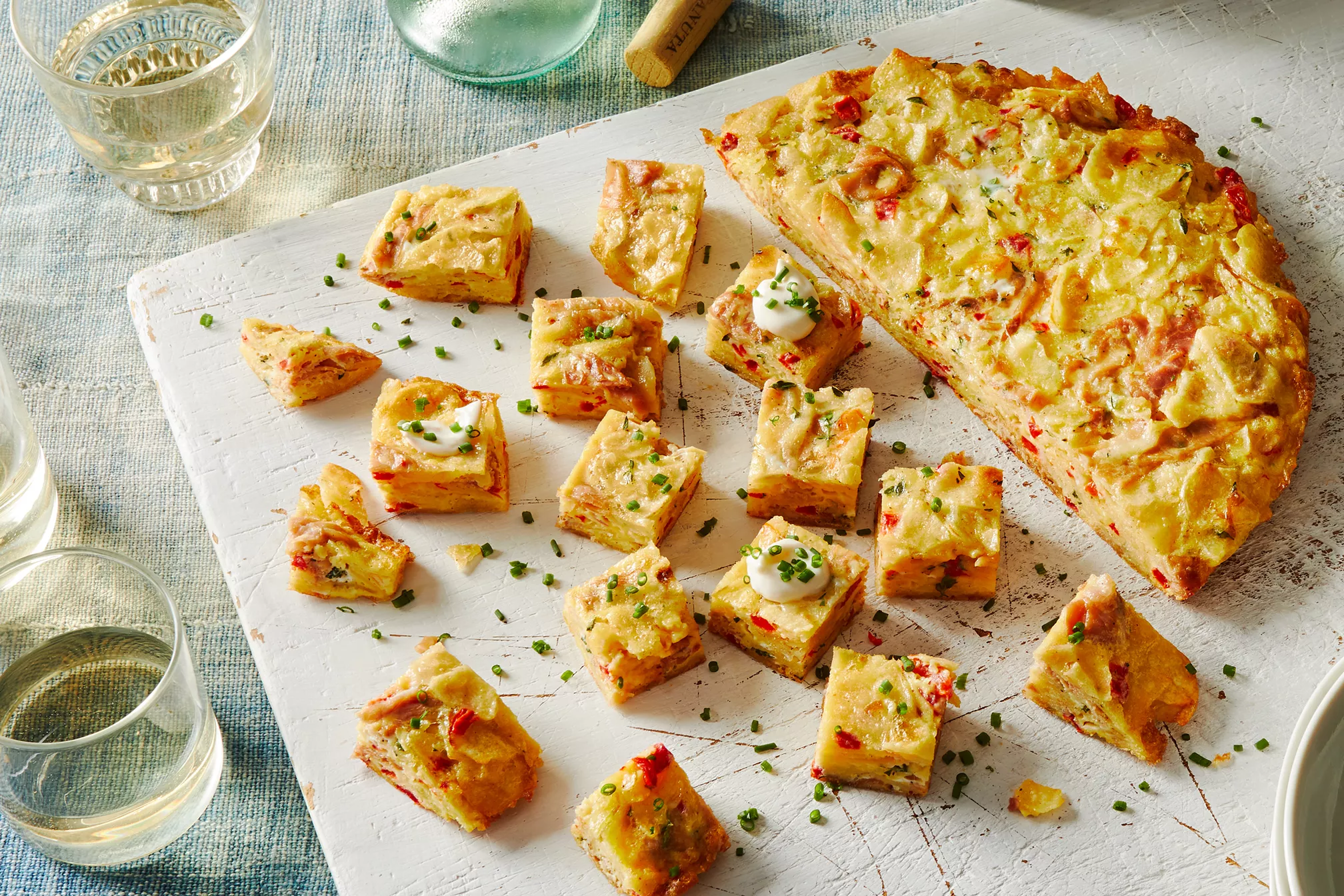"soupçon - a very small amount." Cambridge Dictionary
In French it also means a suspicion.

So let's stay French - well only in that soupçon is one of those French words that the English have taken into their own language. Along with a vast number of others of course. Did you know that the aristocrats of England only spoke French for 300 years after the Norman conquest? English did not become the official language of England until 1362 in the reign of Edward III although many courtiers continued in French until the end of the century. And yes soupçon does indeed mean very small amounts - a taste really - because it is a word that is mostly applied to food.
OK - on to the bits and pieces of today and a new week.

Calçots and Salbitxada sauce
To neighbouring Spain - well Catalonia - the bit of Spain that includes Barcelona.
I came across the word 'calçot' - which I had never heard before in an Ottolenghi recipe for Salbitxada sauce (also never heard of before) which is apparently served with said calçots. And what are they? Well, it turns out that they sit somewhere in the allium family (onions et al.) between leeks, and spring onions or those white onions that you buy as salad onions.

"Calçots are a delicious member of the onion family, sitting somewhere between the leek and the spring onion (which you can use if you can't find calćots). Sweet and delicate, they are traditionally eaten at calçotadas, a Catalan winter barbecue where calçots are packed onto grills and eaten with bowls of romesco." Charlie Hibbert/Great British Chefs
The picture above illustrates Charlie Hibbert's Calçots with romescu sauce

And indeed they do seem to be exclusively cooked like this - charred whether on a barbecue or a griddle and generally with a romescu sauce. However I came across in a Guardian/ Ottolenghi recipe for a different sauce - Salbitxada sauce, also spicy but not quite the same. And I have to say that in this picture (not Ottolenghi's) the alliums look a little more like small leeks.

As I said I didn't see many other ways with calçots, although Ottolenghi himself posted on Facebook that his restaurant NOPI was now serving a new side dish of "grilled calçot onion, grape mustard, sourdough crumb" No sauce here, although there's a streak of something white on the plate here. And the calçots are still grilled. They look suspiciously like baby leeks to me.
I don't think you will find them here however, but you could substitute some biggish spring onions. I just had to find out what they were.

Just another flatbread I suppose, but as with Calçots I just had to find out what Bazlama was. It's Turkish, and yes it is a flatbread and even in Turkey there are many different kinds of flatbread. The author of the recipe shown here is called Chris Scheuer and says it's a bit like naan and that:
Supposedly soft and fluffy - and a little thicker than some by the looks of things. Use it for all the things you would use flatbread for. Easy to make but it does involve yeast.
Somebody should do a survey of how many different kinds of flatbread exist in the world. There must be thousands.

Still on strange words that have caught my eye. This is a Nepalese dish - a popular street food in the Khatmandu valley. So what is this? Another version of a flatbread, a pancake, an omelette ..."
"Chatamari is a thin rice flour batter that is fried until crispy then topped with your choice of vegetables, plus eggs, cheese and minced meat, if desired". Nikki Marshall/The Guardian
Another thing you can do with flour and water. Honestly the possibilities are endless.
No this is not the latest TikTok sensation it's a recipe for something that sounds like TiKTok but is actually from the king of molecular gastronomy himself Ferran Adriá who wrote a book called The Family Meal. He's Spanish too so you would think he was a bit protective of the 'authenticity' of tortilla. Well I did read an article recently which said that chefs did not cook complicated stuff at home. After a hard and long day in the kitchen why would you I suppose. You can find the recipe on the New York Times website which tells you that:
"As with any recipe calling for just a few ingredients, quality truly matters here, so opt for the best potato chips, the finest olive oil and the freshest eggs." and also that "If you like, add finely sliced chives, a handful of grated Manchego or perhaps a pinch of piment d’Espelette or paprika like a true tortilla Española." Alexa Weibel/New York Times
Which Food 52 does in its version.

The latest Coles Magazine had three suggestions for infusing honey, which I now find is in response to a trend for hot honey - honey infused with chillies of some kind or another, and online if you click on this item's heading you will find all three versions that Coles proposes but with the emphasis on the Hot honey. Coles, of course was maintaining that it was a trend so I checked to see if it really was. And yes it is - well according to delicious. that is. Although the trend is new to Australia it has been around for a time in the USA:
"Mike Kurtz struck liquid gold when he launched Mike’s Hot Honey in the US in 2010. He first discovered the quirky combo in Brazil, before heading back to Brooklyn to bottle his own. He began drizzling his hot honey on pizzas where he worked, and before long, customers were clamouring to take the product home."
But why would you? - well because:
"It’s the balance of flavours that make hot honey such a hit. The chillies prevent the honey from being overly sweet, while honey gently softens the intense chilli sting. The result is a moreish sauce that tastes good on just about anything."

And they gave the example of this dish from a Perth restaurant of Golden fried pumpkin and scamorza. And now that I think of it both Ottolenghi and Ixta Belfrage had several recipes which combine honey and chilli and yes it's a delicious mix. Drizzle it on anything seems to be the way to go. Especially something hot and cheesy.

Another Coles recipe that I thought was rather fetching and might tart up some mediocre tomatoes quite effectively.
It's not original thought, which I find curiously reassuring and might be worth a ramble some day. I mean is anything truly original and is it possible to ever find who thought of something first? In any field of human endeavour.

You will find several recipes online for Hasselback roasted tomatoes, and also many for a Hasselback version of the Tomato Caprese salad.
Indeed there is Hasselback this and Hasselback that just about everywhere. It's an appearance thing isn't it? It looks good, so let's go for it.
Might try the roasted tomatoes one sometime though. It might make a good side for a barbecue.
Parmesan cheese rinds in soups and stews
I have improved with this waste not want not idea, in that I do remember to freeze those cheese rinds for use in stock, and soup and stews. But I'm not quite there yet because I just forget to use them. So when Felicity Cloake wrote these words in a recent Guardian Feast piece:
"I finally tipped those I’d been hoarding for months into a pan of softening beans, and the flavour they gave the resulting broth was astonishing. There’s no need for stock; I just stirred in some caramelised onion and garlic and a handful of shredded greens, and dug in."
I felt worse than ever. Not that I often make a pot of beans, but I do make stews and soups and stock, so I really should retrieve those rinds and add them to the mix. Maybe I should tip the lot in all at once. Have you done it? They go all melty and soggy as they cook. I even forgot they were there once and pulverized them with everything else with the stick blender. Nobody noticed, other than that it tasted good. The beans sound quite good though, particularly on a wet and miserable day like today.


Comentários